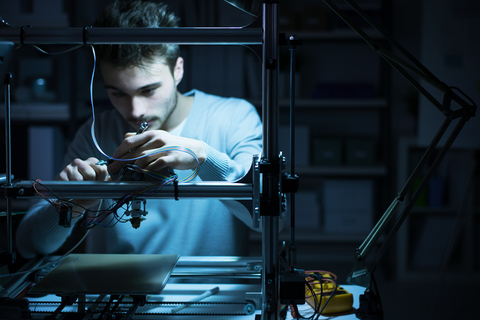Dad designs and 3D prints arm for his son using XBox scanner

A father from Anglesey has designed a 3D printed arm for his two year old son, using a £20 XBox scanner (WalesOnline, 2017).
Former psychology lecturer Ben Ryan developed his own patented hydraulic system to help his son, Sol, who lost most of his left arm following an injury at birth. The system, inspired by how spiders’ legs move using hydraulic pressure, enables Sol’s left arm to grip and power a prosthetic. His local health board described the technology as having the “potential to revolutionise” infant amputee care.
The venture was so successful that Ben and his brother Kevin have now formed a company, called Ambionics, to explore the technology further and have launched a crowdfunding campaign to raise £150,000. Kevin Ryan said “We want to use our unique technology to revolutionise paediatric prosthetics and to help children like Sol receive the very best quality care and support as early as possible.”
Sol, named after the solar eclipse on the day of his birth, was born in March 2015 with an undetected clot in his upper left arm. Surgeons advised amputation through the elbow joint but Ben and his wife Kate persuaded them to save as much of their son’s lower arm function as possible.
Ben said “After Sol was discharged, we learned that no further intervention would be offered through the NHS until he was at least a year old. It was likely to be three years before he could be fitted for an electric device. I thought I could do better for my son. By encouraging him to use both arms during this period of early brain development, we believed Sol would become more likely to adopt prosthetics later on.
“Current prosthetic arm technology for infants dates back to the Victorian era in many cases. They are ugly and often rejected early on. Unfortunately, newer technologies are often unsuitable for children under three and there is evidence that the earlier function can be introduced the better.”
Ben introduced Sol to homemade foam arms from five weeks old and within minutes he began playing with toys. He then approached Bangor University and with the help 3D printing provider Stratasys made a 3D scan of Sol’s NHS-issued arm.
The first prototype socket was described as “smooth, strong and considerably lighter” than the original arm. Within two months he had managed to design and print the first working system, although it was now too small for Sol to wear. Ben knew he needed to scan Sol’s arm but was concerned he may not keep still long enough to produce a scan using the sensitive Artec scanner at Bangor.
He looked for another way and eventually used a £20 Microsoft Xbox Kinect scanner plugged into his laptop to easily scan Sol’s arm while he was asleep. Having taught himself the basics of product design and development, Ben is now working closely with Autodesk’s Paul Sohi, who used the same software to design the world’s first 3D printed sports prosthetic for Rio Paralympic cyclist Denise Schindler, on further features for the device.
Paul Sohi said “It’s been inspiring to work on this innovative and ambitious project. It is amazing that, despite Ben having no background in product design, he’s taught himself enough to create something that will not only help his own son Sol, but potentially lots of others facing the same challenges too.”
Dr Nefyn Williams, director of innovation at Betsi Cadwaladr University Health Board, said “Our research and development department supports the work being carried out at Ambionics, which has the potential to revolutionise the care of infants with upper limb differences.”








